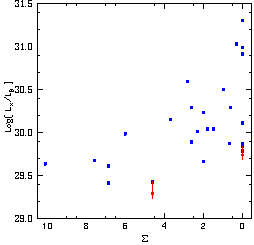
We investigate trends of the cold and hot gas content of early-type galaxies with the presence of optical morphological peculiarities, as measured by the fine-structure index. HI mapping observations from the literature are used to track the cold-gas content, and archival ROSAT PSPC data are used to quantify the hot-gas content. We find that E and S0 galaxies with a high incidence of optical peculiarities are exclusively X-ray underluminous and, therefore, deficient in hot gas. In contrast, more relaxed galaxies with little or no signs of optical peculiarities span a wide range of X-ray luminosities. That is, the X-ray excess anticorrelates with fine structure. There appears to be no similar trend of cold-gas content with either fine-structure index or X-ray content. The fact that only apparently relaxed E and S0 galaxies are strong X-ray emitters is consistent with the hypothesis that after strong disturbances such as a merger hot-gas halos build up over a time scale of several gigayears. This is consistent with the expected mass loss from stars.